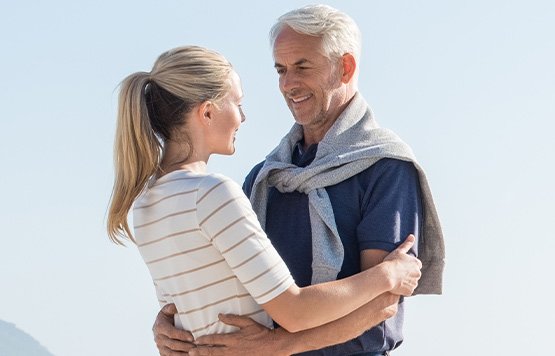We aren't guaranteed much as adults, but if there's one thing we can count on, it's that our bodies change as we get older. For men, that's especially true. One day you're lifting heavy weights and nailing your cardio regimen without having to stretch before or after. And then, in what seems like the blink of an eye, you start to slow down a little. You begin to notice aches and pains in places that weren't there before. You can't just go out for a night on the town, imbibe until your heart is content, and expect to wake up refreshed.
And while headaches and achy joints can be treated with ice and anti-inflammatory medicine, other aspects of aging aren't as easy to treat. You've probably guessed at this point what we're talking about: erectile dysfunction, or ED for short. When brought up to most men, those are two words that cause a guttural reaction of fear and trepidation.
While just about every man fears ED, millions suffer from it - almost 10% of the male population between the ages of 40 and 70. So, if you're beginning to have trouble performing in the heat of the moment, you're definitely not alone. You may be experiencing symptoms like:

Trouble Achieving an Erection

Trouble Maintaining an Erection

Lower Libido

Less Sexual Pleasure

Premature Ejaculation

Inability to Achieve Orgasm
However, at Elite Healthcare Physical Medicine, we understand that stats won't do anything to address the stress and anxiety you're facing in relation to erectile dysfunction. You need a viable solution - a science-backed treatment that doesn't require strange pills or invasive surgeries. As a fully integrated multidisciplinary clinic in Mount Pleasant, we have what you've been searching for: softwave therapy for ED in Pawley's Island, SC.

To fully grasp the benefits of using soft wave therapy for erectile dysfunction, you must first understand what causes ED to begin with. Put simply, erectile dysfunction is the inability to get an erection and keep it throughout sexual intercourse. You should know that it's not uncommon if you have erection trouble. However, if your inability to "get it up" becomes a common occurrence, you may be suffering from ED.
Erectile dysfunction doesn't just affect your penis - it also affects your wellbeing and relationships. It can lower your confidence, cause a large amount of stress that affects your ability to work, and may even cause contention with your partner.
You hear it all the time - as men get older, they often lose the ability to get erect. But why? As men age, the blood vessels in their penis start to fill up with micro-plaques, causing them to deteriorate. When these blood vessels deteriorate, it's more difficult for them to have steady blood flow. And that's the key to ED - having the constant blood flow to get and keep an erection. That's where the science-backed effectiveness of Softwave therapy swoops in to save the day.
Shockwave technology has been around for decades. It has been used at the highest-level research and medical facilities like the Cleveland Clinic and Memorial Sloan Kettering. However, Softwave therapy is a more refined, effective way to treat erectile dysfunction and also advance tissue healing.
Softwave therapy works by using electrohydraulic spark gap technology at its core. Its innovative design features a parabolic reflector applicator that produces very effective, low-intensity shock waves that are unfocused. Elite Healthcare Physical Medicine's Softwave applicator spreads energy to a large area of both superficial and deep tissue, creating a biological response that kickstarts your body's natural healing process.
For men suffering from ED, it is a revolutionary breakthrough treatment that doesn't require harmful surgeries or side effects from pills. In fact, it has been FDA approved for many uses, including improved blood flow, which is often the root cause of erectile dysfunction.
Book Appointment

Unlike some more traditional treatment options, Softwave therapy gets right to the crux of the ED issue. It uses shock wave technology on a cellular level, helping to naturally heal body parts, like the penis. Some of the most common benefits of Softwave therapy include:
Additionally, Softwave treatments don't require much prep, don't have any sketchy side effects, don't require any numbing agents or anesthesia, and result in little-to-no recovery time. Sound too good to be true? Contact Elite Healthcare Physical Medicine today to learn just how effective Softwave therapy is for our patients!

Softwave therapy works by using efficient, effective shock waves that cause biological regeneration processes that heal your body using its own healing factors. It works like this: Softwaves are created via a high-energy electrical discharge in water. The voltage is discharged between the plus and minus tips of an electrode. The spark gap or arching causes an equalization of voltage between the opposing tips of the electrode, which causes a hot plasma bubble. This bubble explodes and distributes in every direction, compresses the surrounding water, and generates a pressure > 10 MPa within nanoseconds.
To sum up, Softwave therapy uses low-intensity, unfocused energy that is delivered by a reflector in parallel waves. These waves help open up the blood vessels in your penis, allowing more blood to flow. At Elite Healthcare Physical Medicine, our team of expert physicians will develop a personalized Softwave therapy plan based on your body and needs. With the right number of treatments, you should be able to achieve and maintain firm erections as you did in your prime.

A Softwave therapy procedure averages 10-15 minutes but may be longer depending on treatment area and diagnosis. A gel is applied to the surface area to be treated. The applicator produces pulses as the clinician moves around the treatment area. During therapy, communication with your provider is necessary to identify treatment areas and monitor progress.
Once treatment is over, you may resume your normal day-to-day activities. In fact, most patients can have Softwave therapy while on their lunch break. You don't have to worry about recovery time, side effects, or any downtime at all.

More than 50% of men will experience erectile dysfunction at some point in their lives. If you're over the age of 30, have been suffering from ED, and don't want to rely on pills or surgery, Softwave therapy may be for you. That's doubly true if you've tried traditional treatments like Viagra and even surgery but didn't get the results you hoped for. Many academic studies about shockwave therapy for ED state that this revolutionary technology is successful where PDE5 inhibitors fail.
In fact, many urologists consider Softwave therapy the most promising ED treatment on the market. The truth is, even if you're not battling ED, men can use Softwave therapy as a preventative way to keep the magic flowing in the bedroom. Some of the key reasons to choose Softwave therapy over less effective, traditional treatments include:
If you're curious why Softwave treatments are so popular for ED, the answer is simple. Prescription drugs like Cialis and others that "treat" ED often come with less-that-savory side effects. At best, these effects are just something patients have to deal with. At worst, they can disrupt your day-to-day schedule and may prevent you from enjoying a healthy life. Sure, some men swear by the "little blue pill," but most guys aren't aware of the hidden risks with drugs like Viagra. The following side effects can be common in both short and long-term circumstances:
If you're suffering through erectile dysfunction, it's crucial to understand why it's happening. The primary reason for ED is a lack of blood flow to the penis, which makes erections difficult to get and keep. Rather than relying on prescription and gas station pills for a quick fix, more men are using softwave ED treatment in Pawley's Island, SC for an all-natural solution minus the side effects. With Softwave therapy, you don't have to live with ED, and you don't have to suffer from scary side effects from popping too many pills.
Book Appointment
Softwave therapy is often a more effective solution for men with ED than similar but less effective treatments using pressure waves. Softwave therapy from Elite Healthcare Physical Medicine uses acoustic pulses or unfocused shockwaves with fast and steep rise times and high positive pressure. Our unfocused wave design makes it possible to spread energy to a larger area, which affects deep and superficial tissue. By targeting a larger area, a more potent biological response is often achieved, initiating your body's natural healing factors.
By comparison, radial pressure waves use acoustic pneumatic pulses with low steeping effects, slow rise times, and large negative pressures. Radial waves are shallower than the shockwaves used in Softwave technology and focus energy and pressure at the surface of the applicator.
Here's a quick breakdown of the differences between softwave therapy for ED in Pawley's Island, SC, and radial pressure waves:

If you're new to the world of Softwave therapy, chances are you've got some lingering questions you need answered. We'll do our best to answer a few of those questions here for your convenience.
Q. Has the FDA approved softwave therapy for ED in cityname, state?
A. Yes - Softwave therapy is FDA 510(k) approved for:
Q. Is softwave therapy painful?
A. Softwave therapy does not require surgery or any invasive form of treatment. With that said, some patients describe minimal discomfort or pain during our softwave treatments. Should this occur, your medical specialist will make necessary adjustments. Usually, patients do not have to endure any pain at all and only experience a pulse or tapping feeling on their skin.
Q. How long is a Softwave treatment session?
A. An individual session only takes five to fifteen minutes. It's typically recommended that patients have treatment once a week for three to five weeks. The length and frequency of your Softwave therapy sessions will be determined after you visit our medical clinic for a comprehensive evaluation.
Q. How long does it take for Softwave therapy to work?
A. Every patient we treat is different, and as such, will have different treatment recommendations. Often, patients notice the results of Softwave therapy after the first session. However, for the longest-lasting effects, most patients need between three and four treatments, with a week of non-treatment after every session.
Q. Can I combine Softwave therapy with other treatments from Elite Healthcare Physical Medicine?
A. It's hard to give a definitive answer to this question since every patient is different. It's important for you to have a full evaluation to determine the scope of your needs and the appropriate therapies. However, Softwave therapy often works very well with other treatments. In fact, other therapies offered at our medical clinic like massage therapy and chiropractic care can make Softwave treatment even more effective.
Remember - our team at Elite Healthcare Physical Medicine is always happy to answer any questions you may have about ED or our ED treatments. Give us a call today - it would be our pleasure to get to know you better!
Unlike some wellness clinics, our experienced providers work together to optimize treatment for men suffering from ED. We always strive to make sexual wellbeing an accessible part of your everyday lifestyle.
That's why, at Elite Healthcare Physical Medicine, our mission is simple: to correct the root cause of your erectile dysfunction by taking a comprehensive, total body approach to healing and treatment. We want to address your ED problem without having to resort to chemical-based medications or unnecessary surgeries. Instead, we focus on all-natural, effective solutions like shockwave therapy for ED in Pawley's Island, SC.
By discovering what's best for each person's individual body and needs, we can help create a healthier future for those in our community through our holistic physical medicine practices. Contact our office to learn more about Softwave therapy and how we can solve the underlying causes of your unique ED situation.
Book AppointmentThink, “Midsommar.” Or “Shaun of the Dead.” Or, “The Wicker Man.”These are some of the movies that have inspired 21-year-old film director Mathew Epp in a latest film project that takes place in Pawleys Island.Epp, a Charlotte, North Carolina, resident, graduated from University of North Carolina at Charlotte recently and is working on a new project, “Eden Avenue.” Pawl...
Think, “Midsommar.” Or “Shaun of the Dead.” Or, “The Wicker Man.”
These are some of the movies that have inspired 21-year-old film director Mathew Epp in a latest film project that takes place in Pawleys Island.
Epp, a Charlotte, North Carolina, resident, graduated from University of North Carolina at Charlotte recently and is working on a new project, “Eden Avenue.”
Pawleys Island has the perfect small town nature to it, Epp said. He had been visiting a friend — the lead actor — for the past five or six months and decided it was a perfect setting for the film.
“I just realized like the more and more I go down there, you know, it’s a small town,” Epp said. “It’s a local community. And it’s beautiful.”
“Eden Avenue” follows a group of recent college graduates — Michael, Allie, Nick and Brandon, as they decide to take one last vacation together.
The beach town they end up at is inviting at first, Epp said. The town name “Eden Avenue” is supposed to give the area a motherly, inviting feeling.
But there’s a darker side.
The people of Eden Avenue are infected by the algae in the waters. It turns them into a cult-like group of people bent on infecting the protagonists, Epp explained.
It takes on a theme of “group of kids versus everyone else,” he said.
All of this occurs as the protagonists face internal struggles about change. The movie is character driven, and is much more about personal conflicts, such as accepting change than the cult, he said.
With about 20 working on the project, including a crew of 10 and around five to 10 actors, it’s still a while before local residents can see Pawleys Island on the screen.
Epp said that “Eden Avenue” was still in a pre-production stage, but filming is set to begin this month and will take a few days. The crew is still working on getting permits to film in specific areas.
Local viewers can expect to see a recognizable area in Pawleys Island, including the Pawleys Inlet toward the south end of the beach. Epp said he was working with Clam Bake Cove or Oakley as possible settings as well.
He anticipates a spring 2024 release, with “Eden Avenue” distributed on public platforms and then premiering locally in theaters.
The project members are asking for donations to help with production.
And “Eden Avenue” still has some spots left for extras in some scenes, he said.
Those interested can email Fortis Fortuna Films, the production company, at Fortisfortunafilm@gmail.com.
This story was originally published August 11, 2023, 5:00 AM.
Georgetown County Council has given final approval to a rezoning request that allows an Aldi grocery store to be built on property at the corner of Highway 17 and Petigru Drive in Pawleys Island. During Tuesday’s meeting, the vote was 5-0 to approve amending the Pavilion Square Flexible Design District (FDD) zoning that will now allow for a “larger retail store” to be built on the site.Councilmembers Stella Marcado and Lillie Jean Johnson were absent from ...
Georgetown County Council has given final approval to a rezoning request that allows an Aldi grocery store to be built on property at the corner of Highway 17 and Petigru Drive in Pawleys Island. During Tuesday’s meeting, the vote was 5-0 to approve amending the Pavilion Square Flexible Design District (FDD) zoning that will now allow for a “larger retail store” to be built on the site.Councilmembers Stella Marcado and Lillie Jean Johnson were absent from the meeting.The zoning change request was made by attorney Dan Stacy, representing 3J7B Real Estate of Charleston. That company also owns 7 Brew drive-thru coffee shop on the site.Plans for the site not only include a 19,423-square-foot grocery store, identified by County Councilman Bob Anderson as Aldi, but also for four buildings containing a mix of office and retail space.Aldi is a privately-held German company which, last year purchased 400 Winn-Dixie and Harveys supermarkets as part of an expansion.This is the second time a grocer has considered the site. Back in 2017, grocery chain Lidl – a direct Aldi competitor – had the property rezoned. Plans for that store fell through and in 2019 the original flex district zoning was placed back on the property.County Planner Holly Richardson told council when the matter was before the county Planning Commission last year, only three residents expressed concerns. The biggest issue raised was how the new businesses will impact traffic in the area.Richardson said Tuesday it is estimated once the property is developed it will result in 2,584 annual daily trips, which is about 1,000 less than the estimate in 2017 when the Lidl rezoning was being considered.The owners must provide the county with a parking and landscape plan, Richardson said..
Lisa Ann SassMAR 01, 2024 • I'm not happy that we need another Grocery store. We have enough stores, I feel this will put our stores in jeopardy. I say no to another Grocery store. We have enough traffic now. When does Pawleys Island stop with stores.LadFEB 28, 2024 • We welcome Aldi’s to Pawleys Island! Finally a reasonably priced grocery store! PFEB 28, 2024 • SERIOUSLY, another grocery store. Between grocery stores, storage units & gas stations, Pawleys Island has lost it's charmAnonFEB 28, 2024 • Pawleys Island does NOT need another grocery store. Stop trying to push this small town to its breaking point, we are FULL!!!!CooperFEB 28, 2024 • In this case, more is not less when it comes to cars in this already busy intersection. Unless scdot adds a safe crossing for pedestrians and cyclists, as well as sidewalks along Petigru, this intersection will become more hazardous and unsafe for all.
Work began this week to repave the main road on Pawleys Island, but the work won’t be completed until spring.And that’s fine by town officials who have waited two years for the project to start. They hope the extra time can be used to make improvements to drainage on the island.“This could be a positive overall,” Mayor Brian Henry said.The state Department of Transportation is repaving Myrtle Avenue from the Birds Nest section on the south end to First Street on the north end. The repaving will co...
Work began this week to repave the main road on Pawleys Island, but the work won’t be completed until spring.
And that’s fine by town officials who have waited two years for the project to start. They hope the extra time can be used to make improvements to drainage on the island.
“This could be a positive overall,” Mayor Brian Henry said.
The state Department of Transportation is repaving Myrtle Avenue from the Birds Nest section on the south end to First Street on the north end. The repaving will continue along First Street to Atlantic Avenue and then north to the dead end. The work was approved in 2021, but the contract allowed it to be completed by the end of 2024.
Until last week, the town thought the work would be done in the spring. But after a meeting last week with DOT staff, Administrator Dan Newquist said he learned it would start this week.
“Welcome DOT,” he said. “This, frankly, was overwhelming.”
Because of the short notice, the Georgetown County Water and Sewer District didn’t have time to upgrade the manhole covers along the route of the repaving. New covers needed to be ordered.
Police Chief Mike Fanning pointed out that the last time the covers were replaced the utility found corrosion damage to the pipes.
After letting property owners know to expect paving to start this week, Newquist started to hear concerns. DOT then agreed that the contractor would put down asphalt to level the pavement this week, then return in the spring to complete the work.
The town hopes that the added pavement, although only 1.25 inches on average, will help reduce flooding from high tides and during storms.
Paul Groce, an island resident, praised the town and DOT for improving the project on the fly.
“A common sense solution has allowed DOT to reallocate a whole lot of material that had been allocated for driveways,” he said.
Instead, it will be used to fill low areas.
Henry noted that DOT has promised to repair damaged drain pipes when they’re found. It makes sense to find them before the repaving, he said.
The town got $250,000 in the state budget for drainage improvements along with word last week it will receive another $150,000 from the S.C. Rural Infrastructure Authority for the same purpose.
Newquist wants to update the survey of the island’s drainage system. He went looking for drains with the public works crew last week. “They are hard to find,” he said.
“This may be an opportunity for us,” Henry said.
Council Member Rocky Holliday said it will also allow time to make sure that the new pavement doesn’t dam up water on people’s lots.
Work began this week to repave the main road on Pawleys Island, but the work won’t be completed until spring.And that’s fine by town officials who have waited two years for the project to start. They hope the extra time can be used to make improvements to drainage on the island.“This could be a positive overall,” Mayor Brian Henry said.The state Department of Transportation is repaving Myrtle Avenue from the Birds Nest section on the south end to First Street on the north end. The repaving will co...
Work began this week to repave the main road on Pawleys Island, but the work won’t be completed until spring.
And that’s fine by town officials who have waited two years for the project to start. They hope the extra time can be used to make improvements to drainage on the island.
“This could be a positive overall,” Mayor Brian Henry said.
The state Department of Transportation is repaving Myrtle Avenue from the Birds Nest section on the south end to First Street on the north end. The repaving will continue along First Street to Atlantic Avenue and then north to the dead end. The work was approved in 2021, but the contract allowed it to be completed by the end of 2024.
Until last week, the town thought the work would be done in the spring. But after a meeting last week with DOT staff, Administrator Dan Newquist said he learned it would start this week.
“Welcome DOT,” he said. “This, frankly, was overwhelming.”
Because of the short notice, the Georgetown County Water and Sewer District didn’t have time to upgrade the manhole covers along the route of the repaving. New covers needed to be ordered.
Police Chief Mike Fanning pointed out that the last time the covers were replaced the utility found corrosion damage to the pipes.
After letting property owners know to expect paving to start this week, Newquist started to hear concerns. DOT then agreed that the contractor would put down asphalt to level the pavement this week, then return in the spring to complete the work.
The town hopes that the added pavement, although only 1.25 inches on average, will help reduce flooding from high tides and during storms.
Paul Groce, an island resident, praised the town and DOT for improving the project on the fly.
“A common sense solution has allowed DOT to reallocate a whole lot of material that had been allocated for driveways,” he said.
Instead, it will be used to fill low areas.
Henry noted that DOT has promised to repair damaged drain pipes when they’re found. It makes sense to find them before the repaving, he said.
The town got $250,000 in the state budget for drainage improvements along with word last week it will receive another $150,000 from the S.C. Rural Infrastructure Authority for the same purpose.
Newquist wants to update the survey of the island’s drainage system. He went looking for drains with the public works crew last week. “They are hard to find,” he said.
“This may be an opportunity for us,” Henry said.
Council Member Rocky Holliday said it will also allow time to make sure that the new pavement doesn’t dam up water on people’s lots.
